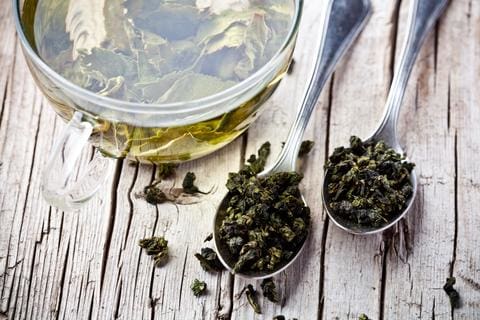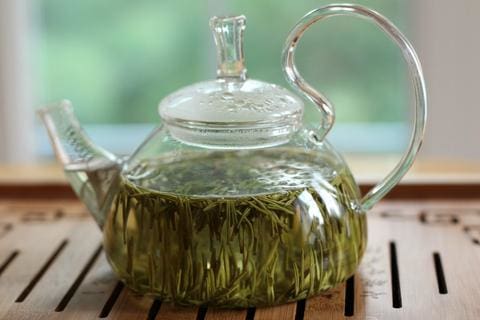
The Complete Guide to Iced Tea, Pt. I: Flash Chilling
Summer is quickly approaching, and as the temperatures begin to rise, so do our desires for cooler drinks to combat the heat. A long-time favorite in this regard for many people the world over is iced tea, and it’s easy to see why. It’s cold, thirst-quenching, and flavorful.

Everyone has their own unique preferences when it comes to serving and garnishing their iced teas, and there really isn’t a correct or incorrect way as far as those things go. Some people enjoy a sprig of mint or lavender, for example, while others just enjoy a neat iced tea. Likewise, you may find it pleasant to sip your iced tea from a cylindrical glass or else you may prefer stemware. These little details are up to you and your imagination.
But how do you make iced tea in the first place? Or to put it more precisely: how can you make the best iced tea? Do you need help with your iced tea? We’ve got you covered.
To answer those questions briefly, there are two popular ways: flash chilling and cold brewing. We’ll walk you through each of those methods over the next two posts to help you make the best iced tea for yourself and your guests.
Method One: Flash Chilling
This method is great when you’re in a pinch, but it’s difficult to master and will never taste superior to a slow brew. You also have to exercise a bit of caution in your preparation since this will require using hot water. In other words, if you’re worried about chemical by-products in plastics, you may want to forego using plasticware when you flash chill.
So what’s this all about and how do you do it?
The basic idea behind the flash chill is to brew an extra strong concentrate of your tea with hot water before pouring it over ice. In so doing, some of the ice will melt, diluting your concentrate into a nice, tasty tea while the quick exposure to ice lowers the temperature. The end result is a perfectly iced tea.
The trick to the flash chill is to anticipate the dilution of your tea. Not only will you want to use less water to brew it, but you’ll also want to use more leaves. The problem this poses is that if you use too little water, the ice won’t melt quickly enough, but if you use too much, the tea will taste weak. You really have to try to get it just right.
Here’s an example if you’re aiming to flash chill a 12oz iced tea (feel free to adjust the ratios to your needs).
Step One – Measure Out 6g Loose Leaf Tea + Heat 6oz Water
Before you begin infusing, make sure to remember that you’ll be pouring this tea over some ice in a different mug or glass (and if it’s glass, make sure it’s heat-resistant, such as borosilicate — otherwise, a quick change in temperature from cold to hot risks cracking or breaking your glass).
For the infusion itself, you may want to consider using a fair cup or server for infusion. These are ideal because they allow you to quickly and easily pour your tea off into something else.
As far as selecting a tea, feel free to use almost any tea in your cabinet with this method. While oolongs, black teas, and pu’erhs are already generally brewed just off of boiling temperature (205°F or 95°C), you’ll want to consider brewing your green teas and white teas at a slightly higher temperature than usual, such as 185°F (85°C) for green and 190°F (88°C) for white.
Once you’ve settled on your tea, started to heat your water, and found the perfect temporary cup or server for infusion, you’re ready for the next step.

Step Two – Set Your Timer and Infuse
No matter which tea it is, set your timer for approximately 2.5 minutes. The hotter temperatures and longer brewing times with the extra tea leaves will ensure that your tea concentrate is of the right strength for dilution and temperature to melt the ice.
While you’re waiting for your tea, this is an excellent time to add any sweeteners of your choice, such as honey or sugar. The hot water will help these ingredients dissolve more quickly and evenly as the tea continues to brew. Note, however, that if you intend on using milk, cream, or lemon juice, you’ll instead want to add those to the next step instead.
In any event, you should also be using the infusion time to prepare for the next step.
Step Three – Fill Your 12oz Mug (or Glass) with Ice Cubes
When you’ve decided on your 12oz mug or glass, be sure to fill it ¾ of the way full of ice cubes while you’re waiting on your tea to finish brewing (you do not want to fill it to the brim or else you’ll risk filling your mug too high).
The reason that you want to add your ice cubes as you’re waiting for your tea to brew is that this prevents your glassware from getting too cold, protecting it from shock breaking or chipping when exposed to heat. Adding the ice cubes too early in the process risks chilling the glass too much.
If you planned on using milk, cream, or lemon juice, here is where you’ll want to add any of these ingredients. Simply pour them over the ice. Just keep in mind that you’re dealing with a concentrate and there will be ice melt, and so you’ll want to use no more than 1–2 oz of milk or cream.
Step Four – Pour Your Tea Over the Ice Cubes
As soon as your tea concentrate is ready and while it’s still hot, pour it over the ice cubes in a quick, controlled manner. You’ll notice that about ¼ to ½ of the ice cubes will have dissolved into your concentrate, leaving you with just a few ice cubes left and a happy amount of iced tea.
Whether or not you added anything to your iced tea during any of the steps, such as sweetener or cream, you may want to reach for a spoon and gently, slowly stir your iced tea. This helps ensure that your concentrate is evenly distributed throughout the water.
If everything went according to plan, you should be ready to enjoy a great cup of iced tea!